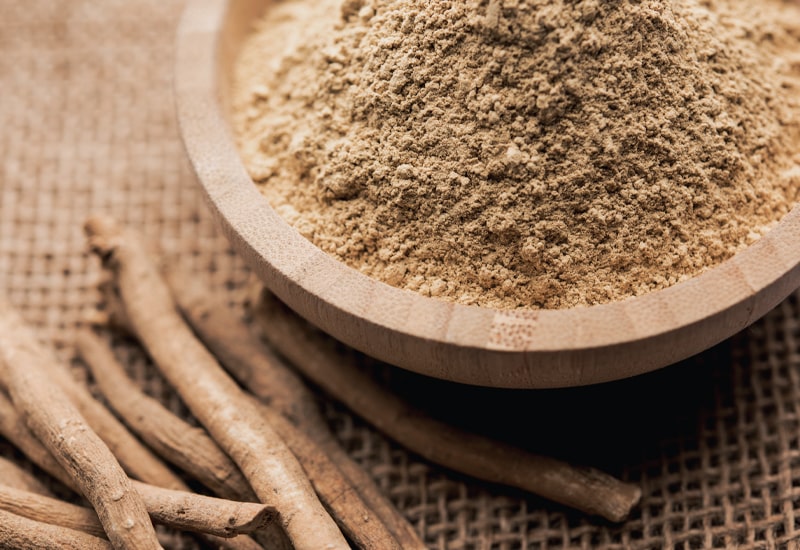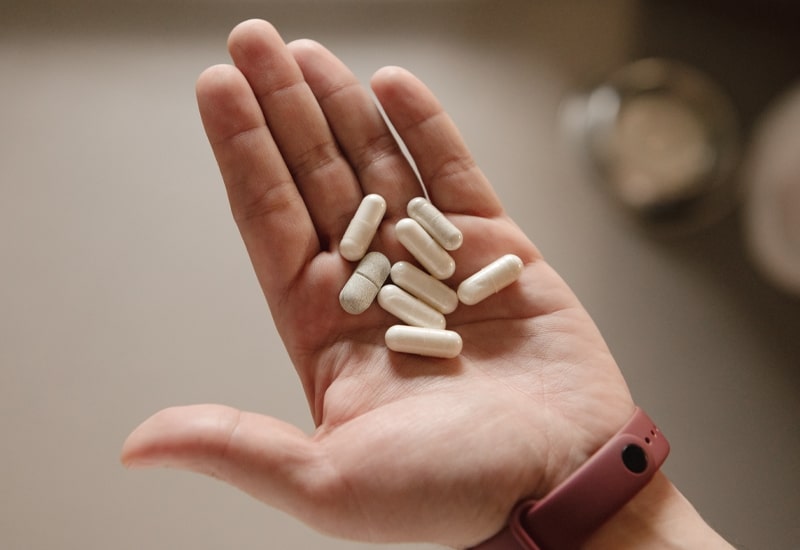Natural Anabolic Steroids, do they really exist?
A steroid is a biologically active organic compound with four rings arranged in a specific configuration, condensed carbon atoms. Steroids have two main biological functions: as important components of cell membranes , capable of altering their fluidity, and as signaling molecules , those molecules which are more commonly known as hormones . Per example, steroids are sex hormones (such as testosterone, dihydrotestosterone, estradiol, progesterone) and adrenal cortical hormones (cortisol, aldosterone).
 The body naturally produces steroids , such as the aforementioned testosterone, for building muscle tissue and for other important bodily processes. We often hear about steroids with reference to anabolic drugs, used improperly and illegally to increase muscle mass or sports performance, ignoring instead that there are natural substances that could, without the side effects of drug therapy, help us to increase the results of our workouts.Steroids defined as "natural" typically refer to compounds found in plants, herbs, and other strictly natural or plant-derived sources that mimic human hormones or directly mimic steroids. Supporters of natural steroids claim that they act like anabolic steroids in the body. But which are the most interesting? And above all… what does research tell us about it?
The body naturally produces steroids , such as the aforementioned testosterone, for building muscle tissue and for other important bodily processes. We often hear about steroids with reference to anabolic drugs, used improperly and illegally to increase muscle mass or sports performance, ignoring instead that there are natural substances that could, without the side effects of drug therapy, help us to increase the results of our workouts.Steroids defined as "natural" typically refer to compounds found in plants, herbs, and other strictly natural or plant-derived sources that mimic human hormones or directly mimic steroids. Supporters of natural steroids claim that they act like anabolic steroids in the body. But which are the most interesting? And above all… what does research tell us about it?
Below we leave you a list, with attached scientific explanation, of the substances that can act in this sense.
-
Ashwagandha
The " Withania somnifera ", better known as Ashwagandha or Indian Ginseng, is an evergreen plant belonging to the Solanaceae family. It grows mainly in India, the Middle East and some parts of Africa and is today one of the main "adaptogenic" plants, so called for their unique and exclusive ability to adapt their functions to specific physical, chemical and biological needs of each individual.
This plant, whose drug is made up of leaves and roots, is also widely used in Ayurvedic medicine for rejuvenation, revitalization and longevity. In a 2018 study by Ziegenfuss, a sample of healthy males was administered a dose of 500 milligrams (mg) of Ashwagandha per day for 12 weeks, all in conjunction with progressive training using overloads for 4 days per week. week. The result obtained showed that people who had taken Ashwagandha also experienced greater improvements in lower and upper body strength, as well as a favorable distribution of body mass compared to those in the placebo group.
-
Zinc
Zinc is an essential trace element, it occurs naturally in a wide variety of both plant and animal foods. Among the numerous functions it performs within our body, one of the most interesting and investigated by research is precisely the control it performs on muscle growth and repair . Specifically, the researchers found that zinc appears to have important links with the natural process of muscle loss associated with aging, what is commonly referred to as sarcopenia. An interesting 2018 review also found, albeit only through an observational study, a correlation between zinc intake and physical performance in the elderly. Unfortunately, at the moment it is not possible to find data obtained on the sports population, which will certainly represent the future of research.
-
Magnesium
Magnesium , a chemical element that belongs to the group of metals, is present in nature as a mineral in sea water and in the waters of some salty springs. It plays an essential role in some biochemical processes and contributes to the proper functioning of our body . It forms an important part of several enzymatic reactions that affect muscle performance during exercise. Researchers believe that this mineral may also help maintain muscle integrity, particularly during endurance activity. In a 2019 study by Cordova it was found that taking 400 mg of magnesium per day for 3 weeks helped reduce muscle damagein 18 male professional cyclists. It is therefore a fundamental factor for speeding up recovery and consequently the quality of sporting performance of this type of athlete.
-
Boro
Boron is a naturally occurring element found in large quantities in earth's mineral deposits around the world. It is widely used in industrial and metallurgical applications, such as for the production of glass fiber or ceramics. We also find it in many of the foods we bring to the table every day, such as apples, oranges, red grapes, pears, kiwis, dates, dried fruit and avocado. In the form of a supplement it has aroused a lot of interest in people suffering from erectile dysfunction or with low testosterone levels.  But, despite its widespread use, the mechanism of action has not yet been well understood. According to a 2015 review by Pizzorno, taking a 6 mg dose of boron for just one week has the following benefits:increased free testosterone levels by nearly 25% (allowing it to bind to Protein in the blood, which can be even more beneficial as we age), decreased inflammation markers such as interleukin by more than half and C-reactive protein, improved cognitive functions (such as hand-eye coordination and memory), increased effectiveness of Vitamin D , which may also contribute to healthy testosterone levels.
But, despite its widespread use, the mechanism of action has not yet been well understood. According to a 2015 review by Pizzorno, taking a 6 mg dose of boron for just one week has the following benefits:increased free testosterone levels by nearly 25% (allowing it to bind to Protein in the blood, which can be even more beneficial as we age), decreased inflammation markers such as interleukin by more than half and C-reactive protein, improved cognitive functions (such as hand-eye coordination and memory), increased effectiveness of Vitamin D , which may also contribute to healthy testosterone levels.
-
Vitamin D
Vitamin D is a fat-soluble vitamin : it is therefore accumulated in the liver and it is therefore not necessary to take it regularly through food, since the body releases it in small doses when its use becomes necessary. We all know that adequate levels of Vitamin D are essential for bone health. Recent research suggests that this vitamin may play a role in muscle health as well, and that there is a link between vitamin D deficiency and loss of strength and muscle mass . However, researchers need to investigate this potential connection further.
A 2018 study by Hassan found that adult women with moderate body compositions and lower body fat levels tended to have higher levels of circulating active vitamin D. The researchers conclude that vitamin D may contribute to muscle health indirectly by acting on adipose tissue. Scientists currently need to perform further studies to see if this connection is applicable to a larger sample of the population.
Conclusions
While medically true anabolics ( anabolic steroids ) are used to treat men who do not produce enough testosterone (a condition called hypogonadism ), to treat some types of anemia and some forms of chronic muscle wasting, several natural substances can help our body to develop at its best.
When our goal is muscle growth, essential factors such as the quality of training, recovery and nutrition must be put in the foreground: with the right support it is possible to obtain a valid physical condition and a good muscle mass, without necessarily resorting to strategies which are likely to be harmful to the body.
Prof Dr Massimiliano Febbi PhD, CSCS Performance Scientist
Bibliography
Ziegenfuss TN, Kedia AW, Sandrock JE, Raub BJ, Kerksick CM, Lopez HL. Effects of an Aqueous Extract of Withania somnifera on Strength Training Adaptations and Recovery: The STAR Trial. Nutrients. 2018 Nov 20;10(11):1807. doi: 10.3390/nu10111807. PMID: 30463324; PMCID: PMC6266766.
Van Dronkelaar C, van Velzen A, Abdelrazek M, van der Steen A, Weijs PJM, Tieland M. Minerals and Sarcopenia; The Role of Calcium, Iron, Magnesium, Phosphorus, Potassium, Selenium, Sodium, and Zinc on Muscle Mass, Muscle Strength, and Physical Performance in Older Adults: A Systematic Review. J Am Med Dir Assoc. 2018 Jan;19(1):6-11.e3. doi: 10.1016/j.jamda.2017.05.026. Epub 2017 Jul 12. PMID: 28711425.
Córdova A, Mielgo-Ayuso J, Roche E, Caballero-García A, Fernandez-Lázaro D. Impact of Magnesium Supplementation in Muscle Damage of Professional Cyclists Competing in a Stage Race. Nutrients. 2019 Aug 16;11(8):1927. doi: 10.3390/nu11081927. PMID: 31426321; PMCID: PMC6723322.
Pizzorno L. Nothing Boring About Boron. Integr Med (Encinitas). 2015 Aug;14(4):35-48. PMID: 26770156; PMCID: PMC4712861.
Hassan-Smith ZK, Jenkinson C, Smith DJ, Hernandez I, Morgan SA, Crabtree NJ, Gittoes NJ, Keevil BG, Stewart PM, Hewison M. 25-hydroxyvitamin D3 and 1,25-dihydroxyvitamin D3 exert distinct effects on human skeletal muscle function and gene expression. PLoS One. 2017 Feb 15;12(2):e0170665. doi: 10.1371/journal.pone.0170665. PMID: 28199350; PMCID: PMC5310904.
